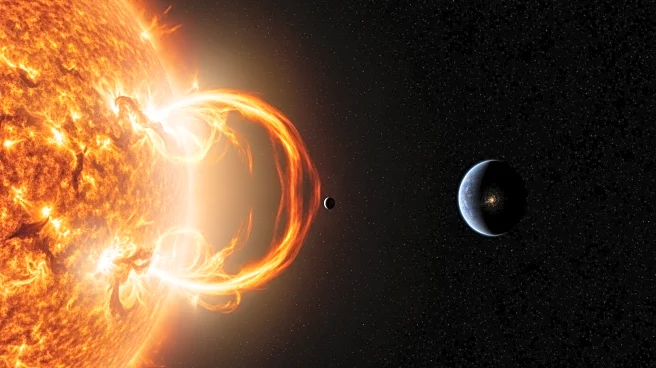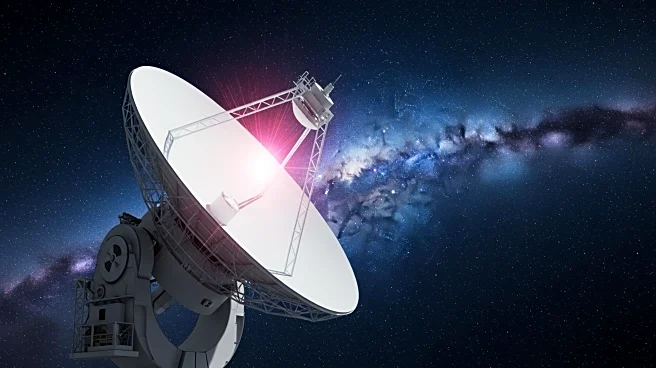What's Happening?
Astronomers have confirmed a rare coronal mass ejection (CME) from a red dwarf star located approximately 130 light-years away, using the European Space Agency's XMM-Newton observatory and the LOFAR radio
telescope. This CME is significant because it is capable of stripping the atmosphere from any nearby planet, a phenomenon previously suspected but not definitively proven for stars other than the Sun. The star, a red dwarf, is characterized by its smaller size, cooler temperature, and stronger magnetic field compared to the Sun. The CME was detected through a unique radio signal, indicating that material had escaped the star's magnetic influence. This discovery marks a milestone in understanding space weather around stars other than the Sun.
Why It's Important?
The confirmation of CMEs on stars other than the Sun has profound implications for the search for habitable planets. Red dwarfs are common hosts for exoplanets, and frequent, intense CMEs could strip atmospheres from planets within the habitable zone, potentially rendering them uninhabitable. This discovery challenges existing models of habitability and suggests that space weather around smaller stars may be more extreme than previously thought. Understanding these dynamics is crucial for assessing the potential for life on planets orbiting red dwarfs, which are abundant in the Milky Way.
What's Next?
The study opens new avenues for observing and understanding space weather phenomena around other stars, which could influence the search for habitable exoplanets. Future research will likely focus on the frequency and intensity of CMEs from red dwarfs and their impact on planetary atmospheres. Collaborative efforts between observatories like XMM-Newton and LOFAR will continue to be essential in expanding our knowledge of stellar eruptions and their implications for planetary habitability.
Beyond the Headlines
This discovery highlights the importance of international collaboration in astronomical research, as demonstrated by the joint efforts of the European Space Agency and the Netherlands Institute for Radio Astronomy. It also underscores the need for advanced observational techniques to study distant celestial phenomena, which can provide insights into the conditions necessary for life beyond our solar system.











